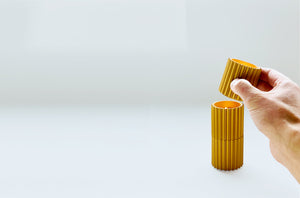Minimal & functional design
Dec 12, 2023
When it comes to design, less is often more. Minimalistic functional design is a powerful approach that focuses on simplicity, efficiency, and usability. By stripping away unnecessary elements and focusing on the essentials, this design philosophy creates products that are not only visually appealing but also highly functional. In this blog post, we will explore the benefits and principles of minimalistic functional design.
What is minimalistic functional design?
Minimalistic functional design is a design approach that emphasizes simplicity and functionality. It involves removing any unnecessary elements and focusing on the core purpose of the product. This design philosophy is often associated with clean lines, neutral colors, and a clutter-free aesthetic.
The benefits of minimalistic functional design
There are several benefits to adopting a minimalistic functional design approach:
1. Enhanced usability
By eliminating unnecessary elements, minimalistic functional design improves the usability of a product. Users can easily understand and navigate the product, leading to a more intuitive and enjoyable experience.
2. Improved focus
Minimalistic functional design helps users focus on the most important elements of a product. By reducing visual clutter, distractions are minimized, allowing users to concentrate on the task at hand.
3. Increased efficiency
With minimalistic functional design, every element serves a purpose. This eliminates any unnecessary features or functions that may hinder the efficiency of a product. Users can accomplish tasks more quickly and effectively.
4. Timeless appeal
Minimalistic functional design has a timeless quality that transcends trends. By focusing on simplicity and essential elements, products designed in this style have a lasting appeal that can withstand the test of time.
The principles of minimalistic functional design
There are several key principles that guide minimalistic functional design:
1. Simplicity
Minimalistic functional design embraces simplicity in both form and function. It eliminates unnecessary complexity and focuses on the core purpose of the product.
2. Clarity
Clear communication is essential in minimalistic functional design. Visual elements should be easy to understand and convey information effectively.
3. Hierarchy
Minimalistic functional design establishes a clear hierarchy of information. Important elements are emphasized, while less important ones are de-emphasized or removed altogether.
4. Balance
Balance is crucial in minimalistic functional design. Visual elements should be harmoniously arranged to create a sense of equilibrium and order.
Check out some of our designs that we think fall into this category...
 |

|
 |


